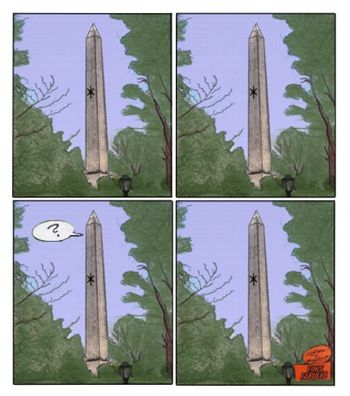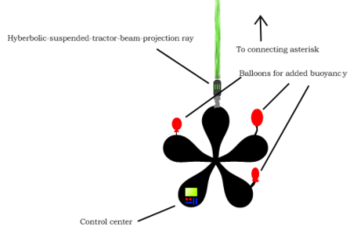*

* Original French title — Huh haw haw, oui oui oui
*An asterisk is a warning symbol used to indicate that small, nearly illegible type has settled at the bottom of a page due to buoyancy issues. Minipixel molecules bond with one another in a process called full frontal copulation, whereby typefaces become smaller. Because text contains the same amount of information no matter the size, and it became smaller (i.e. the volume decreased), and density=matter/volume (matter here is in the form of energy (i.e. information, because energy is clearly required to process actual information)) thus, the matter stays constant, and volume decreases, density must increase. This, in combination with the reduced drag, causes them to sink. Of course, this does create several problems. First, bits of text were falling off the page, and if something had not been found to prevent this, large chunks of knowledge could have been lost forever, leading to the decline of civilization as we know it. Also, the bits of text falling off of pages would litter the floors, and people would slip on the small text, and then demand it be cleaned up, putting a large strain on cleaning personnel everywhere, and causing more and more people to become janitors, making large corporations lose their workforce, causing them to go bankrupt, leading to the rapid decline of civilization as we know it.
Lastly, it constituted a need for some form of early warning system to be devised, preventing any unnecessarily violent reading mishaps or desperate comprehensive confusion from developing and leading to the decline of civilization as we know it. To combat this dangerous potential threat, the Romans wanted to craft a marvelous glyph the likes of which had never been seen by human eyes, but instead they decided to just go with a star, re-engineered to hold up the weighty text through a combination of balloons and hyperbolic-suspension-tractor-beam-projection rays which attached to the asterisk in the main body of the text. This out of the way, the Romans got back to appropriating the whole of Greek culture, renaming it and claiming it as their own.
The earliest written account of the term was found on a parchment thought to have belonged to Cato the Censor, a Roman statesman and bibliographer of porn. On the parchment were the Latin words "Ad asterisk per aspera," which translates to "To the footnotes through difficulties." It is of interest to note that Cato the Censor was the first Roman to suggest using the asterisk in other situations, chiefly to replace profanity. He was promptly told to "Go f**k himself."
